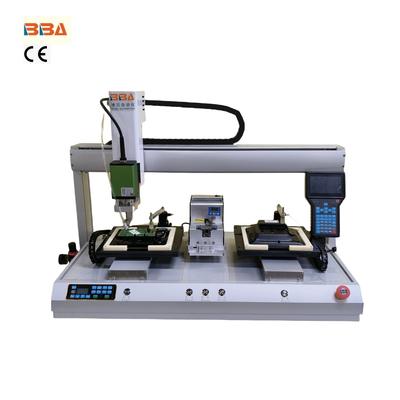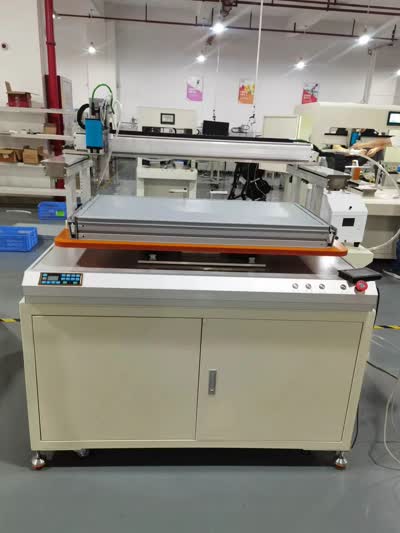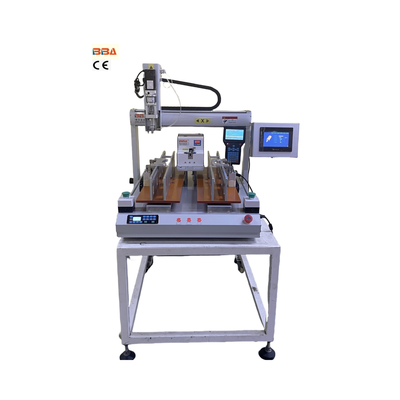Reduce Robotic Screw System Downtime | Industrial Automation Tips
How to Reduce Downtime in Robotic Screw Systems
In the high-stakes world of industrial manufacturing, every second of production counts. Robotic screw driving systems are pillars of efficiency on assembly lines, performing repetitive fastening tasks with unparalleled speed and precision. However, unplanned downtime can quickly erode these advantages, leading to missed deadlines, increased costs, and frustrated teams. The key to sustained productivity lies not just in having advanced technology, but in proactively managing it. Here are several actionable strategies to significantly reduce downtime in your robotic screw systems.
1. Implement a Proactive and Predictive Maintenance Schedule
Waiting for a component to fail is the most costly approach to maintenance. Instead, shift to a proactive strategy. Create a rigorous preventive maintenance calendar based on the manufacturer's guidelines and your specific operational intensity. This includes regularly scheduled inspections, cleaning, and replacement of wear-prone parts like feeder tubes, bit changers, and screws themselves. Furthermore, leverage the power of data. Modern systems provide valuable feedback on torque profiles, cycle times, and error codes. By monitoring trends in this data, you can predict failures before they happen, moving from preventive to truly predictive maintenance.
2. Optimize the Feeding and Presentation of Screws
A staggering percentage of downtime originates not with the robot itself, but with the screw feeder and bowl. Jams, misfeeds, and incorrect part orientation can bring the entire process to a halt. To combat this, ensure you are using high-quality, consistent screws with minimal variation. Regularly clean and maintain the feeder bowl and tracks to prevent debris buildup. Consider investing in a vision-assisted system or a precision escapement that ensures only correctly oriented screws are presented to the driver. This upfront investment in feed system reliability pays massive dividends in uninterrupted runtime.
3. Ensure Flawless Program Logic and Error Handling
The robot's program should be designed for resilience. Incorporate sophisticated error recovery routines. For instance, if a screw is not present or a torque value is out of spec, the program should not simply stop and require manual intervention. Instead, it can attempt a controlled retry, alert the feeder to present a new screw, or flag the specific product for review without halting the entire line. Robust programming turns minor glitches into automatically managed events rather than full-stop failures.
4. Prioritize Operator Training and Empowerment
Your operators are the first line of defense against prolonged downtime. Ensure they are thoroughly trained not only on how to operate the system but, more importantly, on how to respond to common alerts and perform basic troubleshooting. Empower them with clear Standard Operating Procedures (SOPs) for resolving frequent issues like clearing a feeder jam or resetting a torque error. A well-trained operator can often resolve a problem in minutes, preventing what could otherwise become hours of downtime waiting for technical support.
5. Maintain a Strategic Stock of Critical Spare Parts
Even with the best predictive maintenance, parts will eventually wear out. Identify the components most critical to your operation and those with the longest lead times—such as specific motors, feeder mechanisms, or controllers—and maintain a strategic inventory of these spares. This practice turns a potential week-long shutdown into a brief, manageable swap-out, dramatically reducing mean time to repair (MTTR).
Conclusion: A Culture of Continuous Improvement
Reducing downtime is not a one-time project; it's an ongoing culture of continuous improvement. By combining proactive maintenance, intelligent system design, robust programming, skilled operators, and strategic planning, you can maximize the uptime of your robotic screw systems. This holistic approach transforms your automation from a fragile asset into a resilient and powerful driver of productivity, ensuring your assembly line remains a reliable engine for your business's growth.

| Product Name | Applicable industries |
| Screw Locking Robot | Telecommunication Equipment Assembly |


